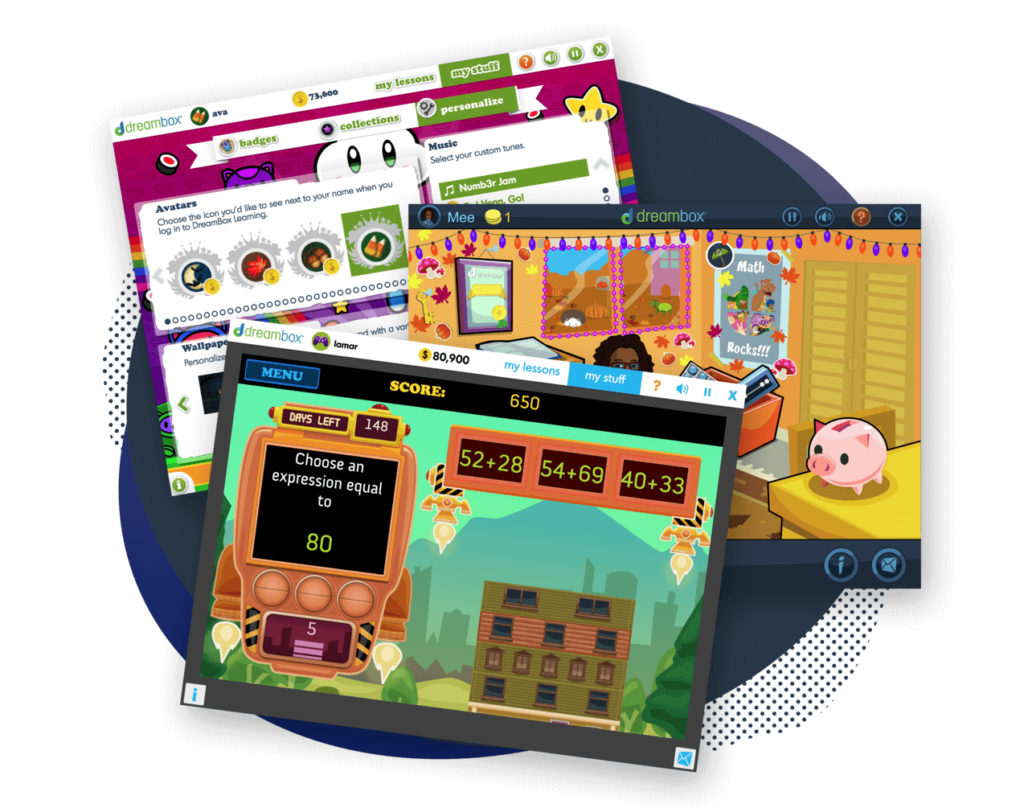20 First Grade Addition Word Problems

Author
Tess Loucka
Published:
July 2025
Key takeaways
- • Word problems are math questions written using words and sentences rather than equations.
- • Solving word problems can teach students reasoning skills, which can be used in real-life situations.
- • Some word problems include unnecessary information. 1st graders should know how to determine which information is essential and which information can be ignored.
What Are Addition Word Problems for First Grade?
Word problems are math problems written using words and sentences rather than equations.
How to Teach Addition Word Problems Effectively
Since students are so used to working with numbers, seeing word problems for the first time can be confusing. However, there are easy ways to make solving first-grade math word problems intuitive.
Using Visual Aids and Manipulatives
Many first graders are visual learners, which means simply staring at words on a page can garner little to no results.
Encouraging Math Talk and Reasoning
Encourage discussion! Talk through complex problems with the child using different wording or phrasing. You can also ask them questions about the problem that can help lead to a solution.
20 First Grade Addition Word Problems
Let’s take a look at a variety of addition word problems first-grade students will likely come across in class and on exams.
10 One-Step Addition Word Problems
One-step addition word problems offer two numbers that need to be added together.
- Amanda has 3 pencils. Adam has 8 pencils. In total, how many pencils do they have?
- Cody bought 4 pillows and Dana bought 5. Together, how many pillows did they buy?
- There were 9 chickens in the coop, but 6 more chickens just went in. How many total chickens are in the coop now?
- Stella was the only student in the classroom. Then, 5 of her friends joined her. Now, how many students are in the classroom?
- A family made up of 4 people is having a picnic at the park. A family of 8 is also having a picnic there. How many people in total are having a picnic at the park?
- Jennifer has 2 long dresses and 7 short dresses. How many dresses does Jennifer have in total?
- On a city street, there are 8 houses in the shade and 11 houses in the sun. In total, how many houses can be found on the city street?
- There were 12 tennis rackets in the closet in the gymnasium. Then, the gym teacher added 6 more. How many tennis rackets are in the closet in total?
- Two penguins were sitting on the iceberg. Three more penguins came to join them. How many penguins are on the iceberg?
- The first batch of cookies you baked contained 10 cookies. The second batch of cookies you made had the same number of cookies as the first batch. In total, how many cookies did you bake?
Table of contents
Get 1st grade math practice with DreamBox
Turn math into playtime with DreamBox Math
DREAMBOX MATH
Get started for FREE today!

10 Real-Life Scenario Addition Word Problems
Some word problems include unnecessary information. It’s important for students to determine what the question is asking and what information is needed to solve the problem.
- Coach Cooper is setting up cones that the team will use for soccer drills. Louis notices that there are already 6 cones on the field before the coach places down 6 more cones. How many total cones are on the field?
- Ms. Jones is surveying her first-grade class of 25 students to find out how many have pet dogs and how many have pet fish. She finds out that Jamie, Alexander, Kevin, Abby, Jacob, and Mia all have dogs, while Liam, Sean, Becka, Liana, Clara, Caleb, and Ethan all have fish. How many students have pet dogs and fish in total?
- Armand is a surfing instructor who goes surfing 5 days a week. He taught two beginner-level classes this week: one on Monday and one on Thursday. His Monday class had 9 students. His Thursday class had 5 students. How many students did Armand teach in total throughout the week?
- Tyler wakes up every day at 7 a.m. He eats breakfast immediately and then goes to school. He usually gets hungry around 10:30 a.m. but isn’t allowed to eat lunch until later in the day. Tyler’s lunch period starts exactly 5 hours after he wakes up. What time does Tyler eat lunch?
- You’re trying to organize the books in your room. You have 33 books in total, but not all of them can fit on your shelf. You’ve already put 15 books on the shelf. Then, you find out 5 more books can fit on the shelf, but no more. How many books can fit on the shelf in total?
- Aunt Lisa is craving spaghetti and meatballs, so she decides to make some for dinner. At first, she rolls 14 meatballs, but then takes a 15-minute break. After her break, she makes 5 more meatballs. How many meatballs in total does Aunt Lisa make?
- Alex goes on a walk after school. It takes her 10 minutes to walk from school to her favorite tree. She spends another 10 minutes bird watching at the tree before walking home. It takes her 5 minutes to walk home from her favorite tree. How many minutes did Alex spend walking in total?
- Charlie and his mom are waiting for the train. They arrive at 4:07 p.m. and find out they just missed their train. Trains come every 8 minutes, so they won’t have to wait long for the next one. If the last train arrived at 4:06 p.m., when is the next train coming?
- Alana already has 6 tabs open on her computer. After finishing her homework, she opens a video streaming tab and watches a show, then she plays a game on a gaming website, creating a new tab. Finally, she reads a book on a free reading website, opening another tab. How many tabs does Alana now have open in total?
- CHALLENGE QUESTION: Anthony keeps track of all the movies he’s seen with a list organized by genre. Looking through his list, he notices that he’s seen 6 comedies, 3 dramas, 2 horror movies, 4 action movies, and 1 romance movie. He plans on seeing 2 more comedy movies with his dad over the weekend. After the weekend, how many movies in total will Anthony have on his list?
One-Step Addition Word Problem Answers
- Amanda and Adam’s pencils:
3 + 8 = 11 pencils - Cody and Dana’s pillows:
4 + 5 = 9 pillows - Chickens in the coop:
9 + 6 = 15 chickens - Students in the classroom:
1 + 5 = 6 students - People at the picnic:
4 + 8 = 12 people - Jennifer’s dresses:
2 + 7 = 9 dresses - Houses on the city street:
8 + 11 = 19 houses - Tennis rackets in the closet:
12 + 6 = 18 rackets - Penguins on the iceberg:
2 + 3 = 5 penguins - Cookies baked:
10 + 10 = 20 cookies
Real Life Scenario Word Problem Answers
- Cones on the field:
6 + 6 = 12 cones - Students with pet dogs and fish:
6 (dogs) + 7 (fish) = 13 students - Students Armand taught:
9 + 5 = 14 students - Time Tyler eats lunch:
7:00 a.m. + 5 hours = 12:00 p.m. (noon) - Books that can fit on the shelf:
15 + 5 = 20 books - Meatballs Aunt Lisa made:
14 + 5 = 19 meatballs - Minutes Alex spent walking:
10 (to tree) + 5 (home) = 15 minutes walking - Next train arrival:
4:06 p.m. + 8 minutes = 4:14 p.m. - Tabs Alana has open:
6 + 3 = 9 tabs - Challenge Question: Total movies Anthony will have:
6 + 3 + 2 + 4 + 1 + 2 = 18 movies
FAQs about 1st grade math addition
Word problems in first grade place abstract math concepts into real-world contexts, teaching how math can be used in everyday life.
Visualize addition problems with visual aids, manipulatives, or drawings. Also, talk through and rephrase complicated questions to assist with problem-solving.
An example of a first-grade word problem is: Anna has 3 apples and Nina has 9 apples. How many apples are there in total?
Take at home math practice to the next level
Empowering parents and educators to make math practice more impactful. Plus, your kids will love it.


About the Author
Tess Loucka
Tess Loucka discovered her passion for writing in high school and has not stopped writing since. Combined with her love of numbers, she became a math and English tutor, focusing on middle- and high-school-level topics. Since graduating from Hunter College, her goal has been to use her writing to spread knowledge and the joy of learning to readers of all ages.